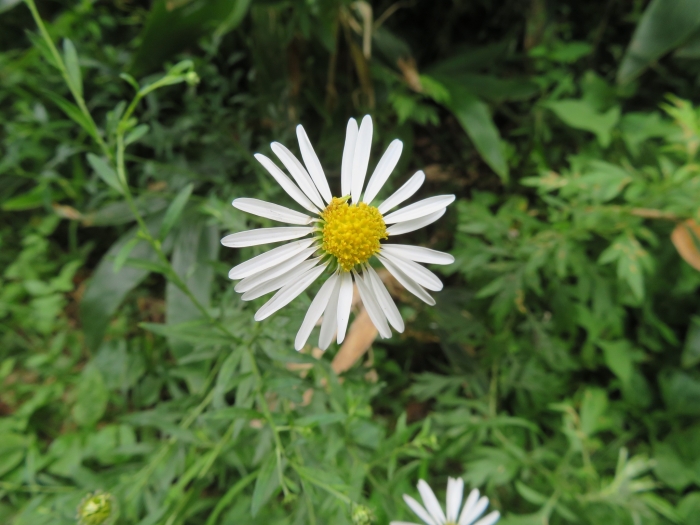Double Japanese Aster
(Kalimeris pinnatifida)
Double Japanese Aster (Kalimeris pinnatifida)
/
/

© belvedere04
CC BY 4.0
Image By:
© belvedere04
Recorded By:
Copyright:
CC BY 4.0
Copyright Notice:
Photo by: © belvedere04 | License Type: CC BY 4.0 | License URL: http://creativecommons.org/licenses/by/4.0/ | Uploader: belvedere04 | Publisher: iNaturalist |


















Estimated Native Range
Summary
Kalimeris pinnatifida, commonly known as double Japanese aster, is a perennial herbaceous plant native to grasslands, open woodlands, and meadows in East Asia, particularly in Korea and Japan. It typically grows to a height of 1-2 feet (30-60 cm) and a similar width, with a mounded form. This plant is characterized by its deeply lobed leaves and daisy-like flowers, which are usually a soft lavender to white in color and bloom from mid-summer to early fall. The double-flowered cultivars are particularly showy, with numerous layered petals that create a fuller appearance.
Double Japanese aster is appreciated for its long blooming period and its ability to add a light, airy texture to garden borders and flower beds. It is relatively low maintenance, drought-tolerant once established, and can thrive in a variety of soil conditions, though it prefers well-drained soil. It is suitable for full sun to part shade and is often used in cottage gardens, as a border plant, or in naturalized areas. While generally pest-free, it can occasionally suffer from powdery mildew in humid conditions. Deadheading spent flowers can encourage a longer blooming season, and division every few years can help maintain its vigor.CC BY-SA 4.0
Double Japanese aster is appreciated for its long blooming period and its ability to add a light, airy texture to garden borders and flower beds. It is relatively low maintenance, drought-tolerant once established, and can thrive in a variety of soil conditions, though it prefers well-drained soil. It is suitable for full sun to part shade and is often used in cottage gardens, as a border plant, or in naturalized areas. While generally pest-free, it can occasionally suffer from powdery mildew in humid conditions. Deadheading spent flowers can encourage a longer blooming season, and division every few years can help maintain its vigor.CC BY-SA 4.0
Plant Description
- Plant Type: Herb
- Height: 2-3 feet
- Width: 2-3 feet
- Growth Rate: Moderate
- Flower Color: White
- Flowering Season: Fall
- Leaf Retention: Deciduous
Growth Requirements
- Sun: Full Sun
- Water: Medium
- Drainage: Medium
Common Uses
Border Plant, Butterfly Garden, Deer Resistant, Drought Tolerant, Groundcover, Low Maintenance, Potted Plant, Rabbit Resistant
Natural Habitat
native to grasslands, open woodlands, and meadows in East Asia, particularly in Korea and Japan
Other Names
Common Names: Cut-Leaf Japanese Aster
Scientific Names: , Kalimeris pinnatifida, Aster iinumae, Aster incisus var. pinnatifidus, Aster indicus var. pinnatifidus, Aster pinnatifidus, Asteromoea indica var. pinnatifida, Asteromoea pinnatifida, Boltonia indica var. pinnatifida,
GBIF Accepted Name: